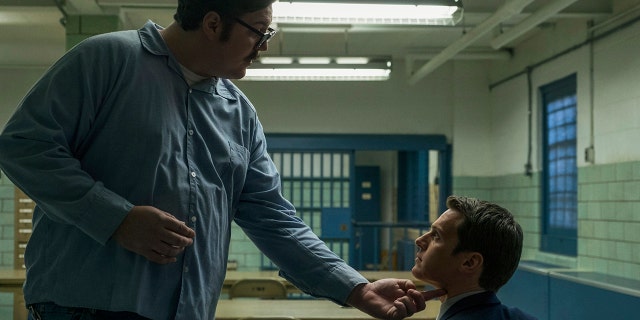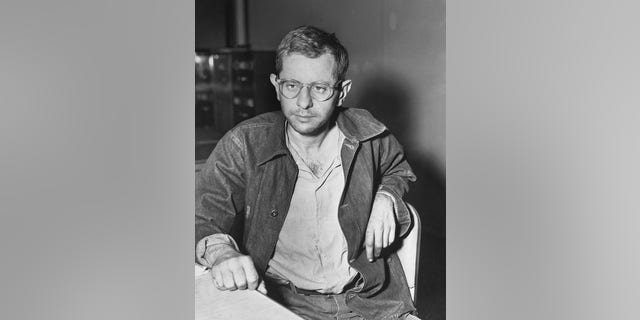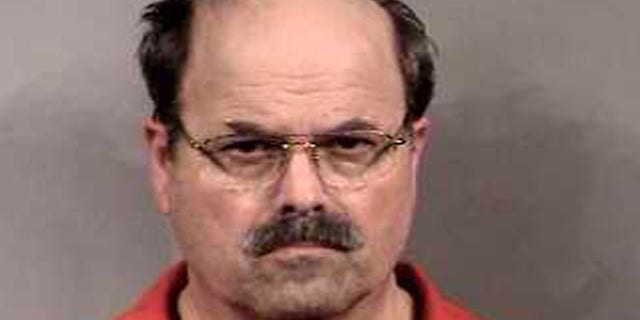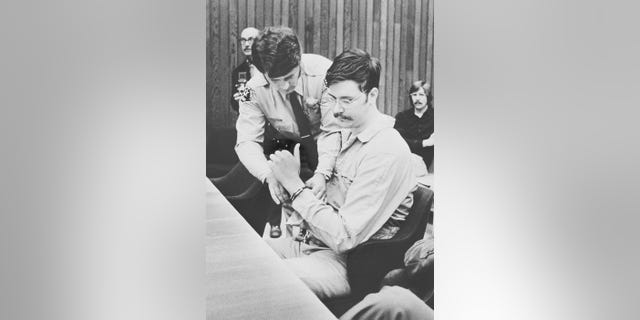Dr. Ann Wolbert Burgess has sat down with some of the most heinous serial killers in American history – but there was one that gave her an unforgettable first impression.
“Ed Kemper, if you will, was very enjoyable to talk to,” she told Fox News Digital. “He was very articulate… He had a voice that carried well, that I guess sold well. He had enough of a personality that wouldn’t offend people, unlike some of the other people who were clearly offensive… He was very personable and didn’t appear to hold back. He also knew exactly when his fantasies for killing started.”
Kemper, known as the “Ogre of Aptos” and “The Co-Ed Killer,” stood at a towering 6-foot-9, had a 136 IQ and spoke with a booming voice made fit to read audiobooks, Burgess described. Kemper began his two-year killing spree three years after leaving a state hospital where he served a conviction for killing his grandparents when he was 15. Beginning in 1972, the now-74-year-old killed six women he picked up hitchhiking, then killed his mother and her closest friend in 1973, before turning himself in. Seven of the victims were decapitated, including his mother.
Edmund Kemper’s right arm is bandaged following a suicide attempt in his Redwood City, California cell.
(Photo by Bettmann Archive/Getty Images)
The celebrated criminal psychologist and researcher, who inspired the character of academic consultant Dr. Wendy Carr in Netflix’s “Mindhunter,” has recently written a memoir titled “A Killer by Design: Murderers, Mindhunters and My Quest to Decipher the Criminal Mind.” In it, she detailed her encounters with the country’s most dangerous men as she analyzed what drove them to kill.
REAL ‘MINDHUNTER’ JOHN DOUGLAS EXPLAINS WHY WHITE SUPREMACIST SERIAL KILLER WAS ‘A DIFFERENT ANIMAL’
“We had always planned to do this book back when I was down at Quantico with the Behavioral Science Unit, but for a variety of reasons, we didn’t do it,” she explained. “We wrote one book, which was our more academic book on sexual homicide…. I began to tell my co-author Steven Constantine about all these papers and the data I had. He was the one that suggested that maybe we should take a closer look and write a book. That’s what we did… I was brought on to try to get a more systematic way of interviewing these individuals…. We wanted to know the recipe for serial killers.”
Burgess noted that the investigators she worked with interviewed Kemper “several times” as he was willing – and eager – to speak out.

Cameron Britton, left, as Ed Kemper in the Netflix true-crime series “Mindhunter.”
(Netflix)
“He recalled how he would practice,” said Burgess. “He talked about how he would practice picking up young co-eds and then going a little further each time until he had a weapon of some kind. He was really testing himself to see how far he could go without doing anything… He never had the opportunity, he said, to date and do what most teenage boys would do. And that was one of the reasons he said he killed. He said, ‘I wish I could have only raped them, but no, I had to kill them.’”
According to Burgess, the criminals were eager to detail their horrific crimes as FBI agents attempted to understand the roots of their motives.
“Many of these men had absent fathers – it was something that would come up frequently,” she explained. “The father would leave, whether it was because of a separation, a divorce, or whatever. As a result, they were raised until a certain age by a dominant parent, which was a mother. I think these FBI agents, certainly at the time, were considered the premier law enforcement agency. [A criminal] would be seen in prison as important if someone from the FBI wanted to interview you.”

Anna Torv as Dr. Wendy Carr in Netflix’s “Mindhunter,” a character said to be inspired by Dr. Ann Wolbert Burgess.
(Netflix)
Burgess also recalled speaking with John Joubert, a former airman and Boy Scout leader who said he enjoyed “seeing the fear” of his victims.
“He certainly appeared harmless, if you want to use that word,” said Burgess. “When he would talk about going out and looking for a victim, all he would say in his interviews was that he just wanted somebody alone. That makes sense, but you also wonder if there were other aspects of the victim being alone. He selected young males, adolescent males, ages 12 and 13. So many of his problems started at that age. So you wonder when you look at the dynamics of what that meant to him and why he targeted that particular age. He tried to protest and say he didn’t care whether they were male or female. However, he didn’t have any female victims.”
In 1996, Joubert was executed in the electric chair for stabbing two boys to death in 1983. After he was convicted in Nebraska for killing Danny Jo Eberle, 13, and Christopher Walden, 12, he was convicted in Maine of strangling and stabbing Richard Stetson, 11. Joubert, 33, claimed the murders were the culmination of years of psychosexual fantasies.

Harvey Glatman, known as “The Lonely Hearts Killer” and “The Glamour Girl Slayer,” was executed in 1959 for murdering three young women in Los Angeles. Glatman posed as a photographer and lured his victims with the promise of a modeling career.
(Getty Images)
Burgess went further back in her studies. She analyzed the case of “Lonely Hearts Killer” Harvey Glatman from the ‘50s. Burgess described how Glatman’s mother took the then-11-year-old to a psychiatrist after she discovered he was interested in autoerotic asphyxiation. However, a mental health professional reportedly told her, “He’s just an adolescent. He’ll outgrow it.” Burgess said that case is crucial as it shows why mental health professionals need to be educated on “the early warning signs.”
“We now always say, ‘Take everything seriously,’” she said.
There was one encounter where she said silence spoke volumes.

John Douglas, former FBI criminal profiler and bestselling author of “Mindhunter.” He said of Dr. Ann Wolbert Burgess, “Of all the colleagues I’ve worked with, Ann is one of the sharpest — and one of the toughest. Ann’s behind-the-scenes work had a profound impact on the FBI’s Behavioral Science Unit, since she taught us how to harness the chaos of serial killers’ minds and helped us decipher the undecipherable.”
(Photo by Alexander James Towle/Fairfax Media via Getty Images.)
“I remember from one of my cases we had one individual who really didn’t talk much,” said Burgess. “He just gave a simple yes or no to any question you asked him in a monotone voice. I mentioned to the lawyers that he was being considered for the death penalty because he had killed his whole family. I said to the lawyers, ‘Has he ever asked you any questions?’ They said, ‘No, he’s never asked one question.’ He was just very happy to be in a solitary cell. My hunch is that he had all of these fantasies in his head. And in solitary confinement, he could just sit there and fantasize about those… desires. That would be one way of looking at it.”
BTK’S DAUGHTER TELLS ALL IN NEW DOC, SAYS FAITH HELPED HER FORGIVE SERIAL KILLER: ‘I JUST SHUT DOWN’
Burgess said there was one serial killer who left her perplexed. Dennis Rader, who called himself “BTK” for “bind, torture and kill,” murdered 10 people in Wichita, Kansas from 1974 to 1991. Police would not catch him until 2005. Burgess admitted she was stunned that Rader kept many souvenirs of his victims around his home that were never discovered by his family.
“He did hide them, whatever that meant,” said Burgess. “I don’t know whether he had a false door or something like that. I never saw any photos of something like that. But I think that also says something about him, that he could do things right under the noses of his wife and children. That is something we saw in killers that would do that to police. They would try to get away with their crimes as close to the police as possible. I remember Kemper said the police were checking all the cars coming down from the campus… The co-eds were not supposed to hitchhike a ride from anyone that didn’t have a university sticker on their car. His mother worked for the college so she had a sticker and he knew that. He also talked about how one time he thought someone might stop him as he went into campus, but he wasn’t waved on. That gave him a particular bit of pleasure that he was able to put it over on the police.”

Dennis Rader murdered 10 people in Wichita from 1974 to 1991.
(Photo by Sedgwick County Sheriff’s Office via Getty Images)
There was one individual Burgess said may have shown a genuine sign of remorse.
“The problem is you don’t know whether they’re showing that emotion because they got caught or they actually felt really bad,” she said. “But I know Montie Rissell commented how he let one of his victims go. She had talked to him about her father who was dying of cancer. He had a brother with cancer. He said, ‘You have enough problems.’ And he let her go. That was always a case we studied. What type of victim would he let go? That way we can use that knowledge for prevention and training. Maybe some things can be said or done that would help. The purpose of the study was really in the service of trying to understand enough so that we could do the prevention on these serial killers.”
Today, Burgess hopes her studies will shed new light on many of these high-profile cases.

Edmund Kemper is currently imprisoned at the California Medical Facility in Vacaville.
(Getty Images)
“I want readers to think from a prevention standpoint where we can identify what we call the red flags in these young men earlier on,” she said. “So many times, people are much more fascinated with the killer and why he did it. But we need to understand how we got here in the first place and not blame the victim. It’s the offender causing damage and injury to our society.”
The Associated Press contributed to this report.